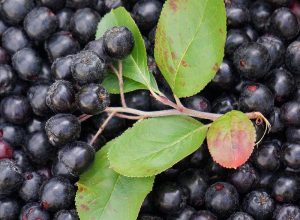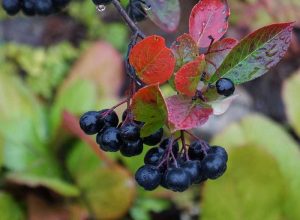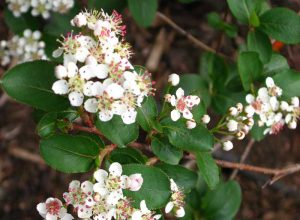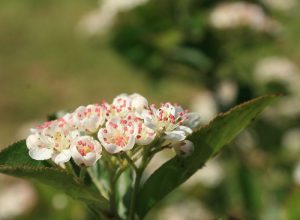Black Chokeberry – Aronia Melanocarpa


Originating from the North Eastern regions of America but widespread in Russia and Eastern European countries, The black chokeberry is a dense, bush/hedge, which can reach a height of 2 metres. Apart from its health properties it is also very decorative.
The slightly lance shaped leaves are deciduous and of a beautiful bright green which with the onset of Autumn form a vivacious display of red and orange. Considering the regions where most a diffused, it doesn’t suffer at all in very cold winters nor in hot summers. A sunny position not only ensures flowering and fruiting, it also enhances the colour , both in Summer and in Autumn.
TERRAIN
The Black Chokeberry or Aronia Melanocarpa is not very demanding and adapts to all types of soil , also those of salty coastal areas, although, obviously, in those which tend to be acid rich, they have a develop better. They thrive well in damp soil with a moderate amount of water stagnation, whilst not tolerating excessively dry, compact soil.


FLORA AND FRUIT
In early Spring, after the appearance of the leaves, clusters of small flowers sparsely bloom at the top and stemming along the main and secondary branches. They are small self pollinating, with five white petals on two different separate layers with various stamen which terminate in showy bright pink anthers which give flowers a pinkish appearance.
Abundant internally of the secondary branches of the plant, and these, mixed with the bright colour of the leaves lends to a commendable esthetic effect.
During the course of Summer, numerous black berries appear on each single flower . covered in bloom (see Siberian Blueberry) the same size of the giant American blueberry, of which internally you find various small, non troublesome seeds which mature in Autumn, and with favourable atmospheric conditions, can remain on the plant even after leaf fall, lending to a fine esthetic effect around the shrub.
USE AND HEALTH PROPERTIES
Not well known in Italy, but instead very much used in Eastern European countries It is eaten fresh and drunk as a juice, to garnish ice creams, cakes and to create thirst quenching soft drinks, its migration from those countries towards Italy flavours the diffusion of this berry even in our country.
As with the more common Giant American Blueberry, which it vaguely similar in taste, the Black Chokeberry contains notable properties: such as the omnipresent vitamin C and vitamin K which indirectly helps maintain bone strength as well as aiding blood coagulation, moreover it consists of numerous salt minerals. The berries of the Black Chokeberry are however better known for its anti-oxidant properties; antociani and polyphenols, flavonoids particularly contribute to the containment of the free root system which are accountable for cellular ageing.
PRUNING AND CULTIVATION
The Black Chokeberry is a shrub with multi branches which begin at the base which cause it to appe “too full” and “messy”to the point of being
Disharmonic especially when planted in the garden. Therefore during the dead season it should be hard pruned eliminating the older branches and in fact if too tall it should be trimmed down to side branch to avoid vigorous and ugly growth.
It is a plant which enjoys damp soil, thereby doesn’t tolerate dryness: you should pay careful attention to watering, not only in drought periods, obviously without exaggerating. Irrigation is influenced by many factors, sun, heat humidity , wind ,position etc. , to say exactly how often and how much depends a lot on common sense and green fingers, this is indispensable in many other cases.
At the time of planting, and only in the case of poor soil it is opportune to fertilize, even with well matured organic fertilizer, otherwise the black Chokeberry rarely need fertilizing in normal soil. If however during the season the plant displays less vigorous, at the end of the following Winter it will be necessary to intervene with a ferterlizer.
It rarely succumbs to fungus attacks, whilst if the Oziorinc is in the vicinity, it will definitely enjoy the leaves, which it finds tasty.
